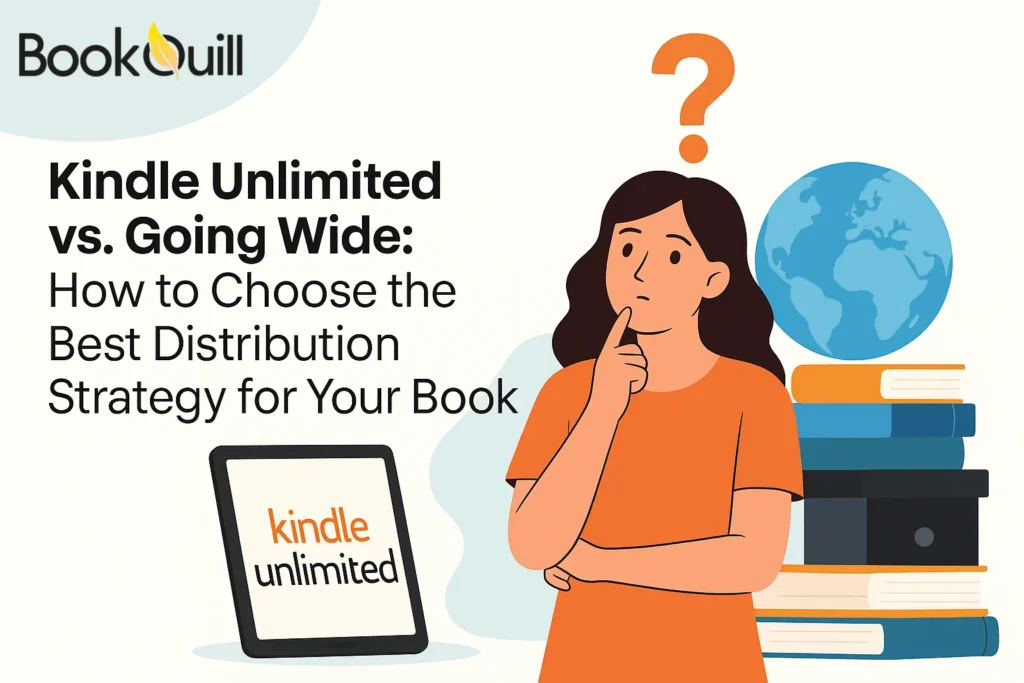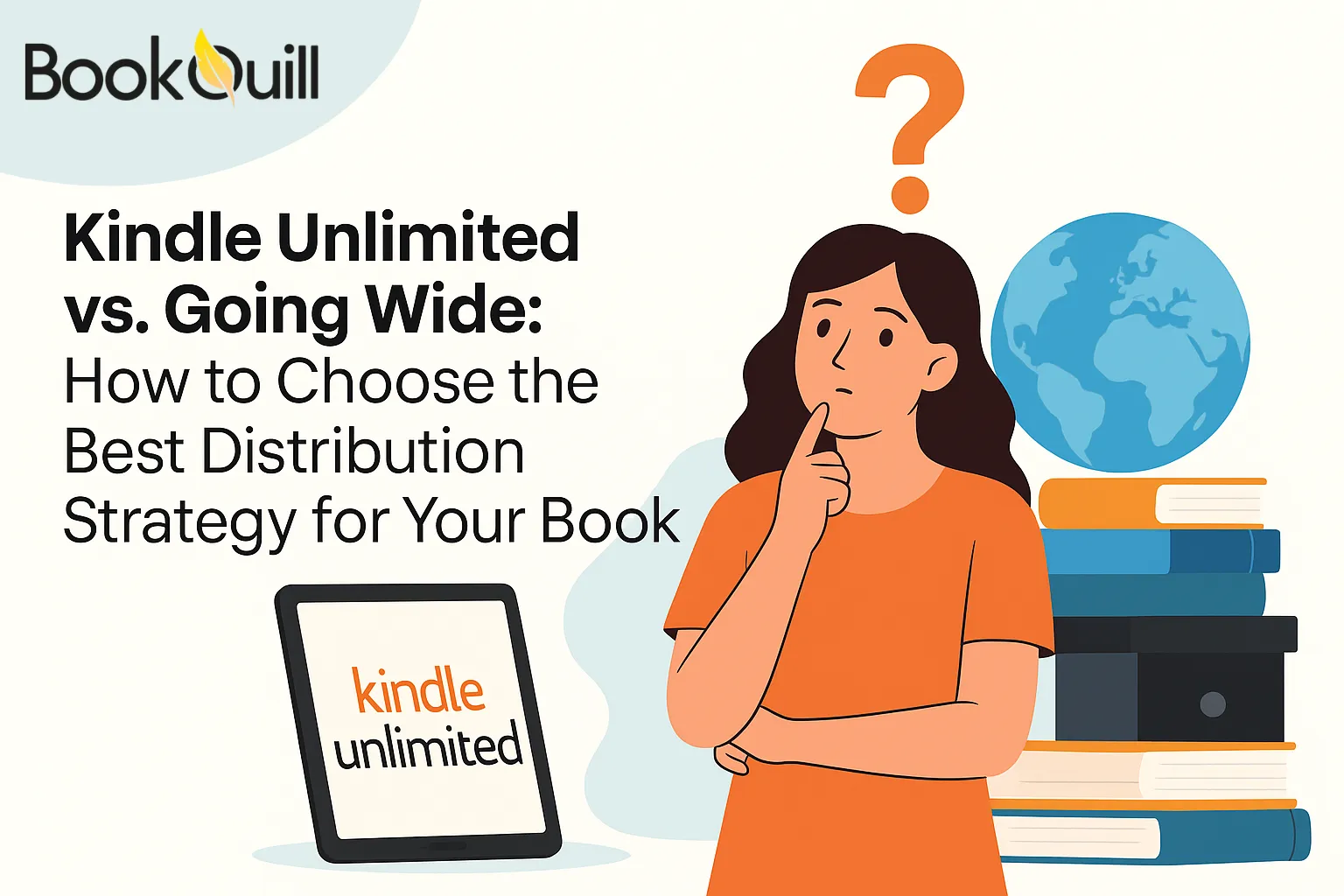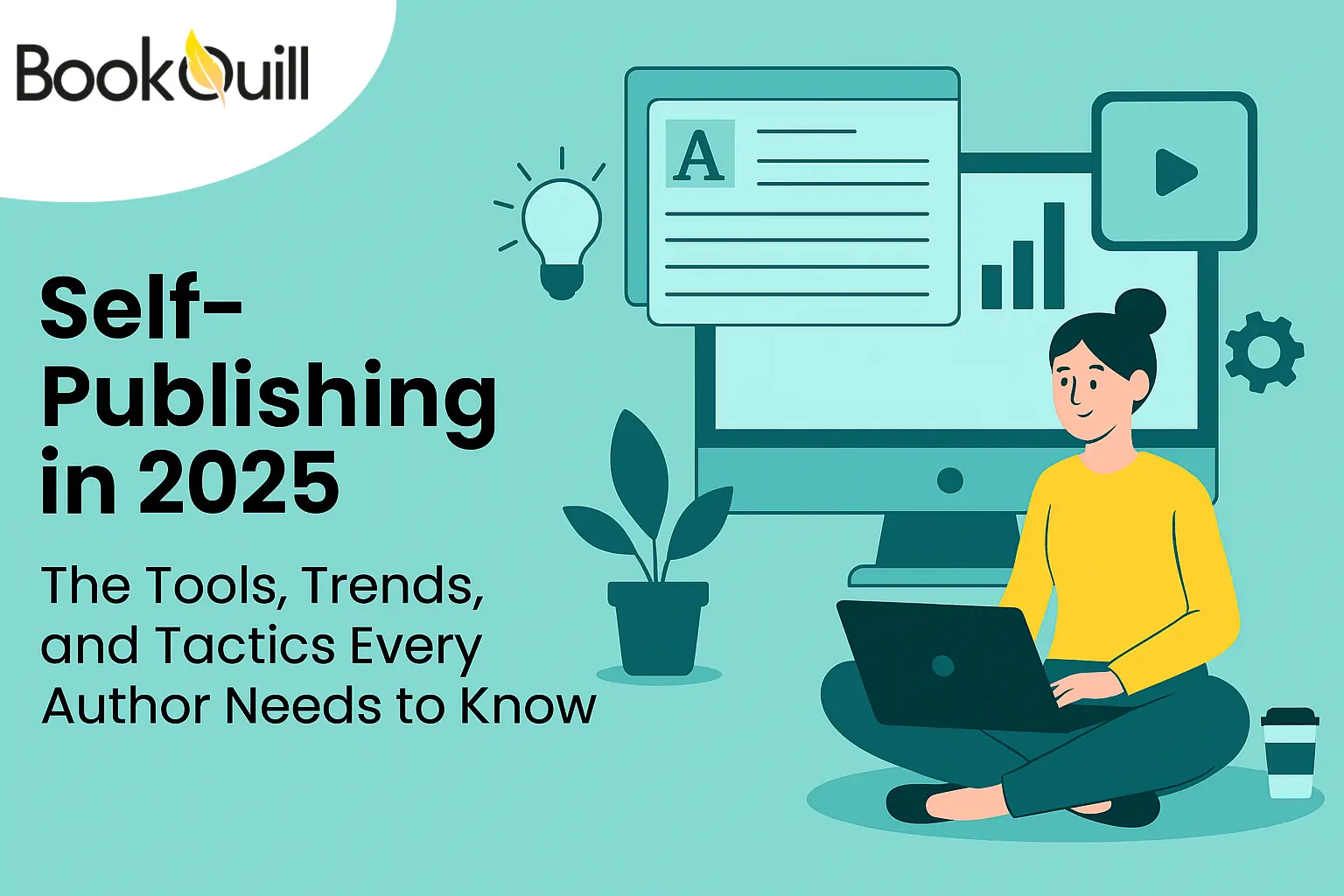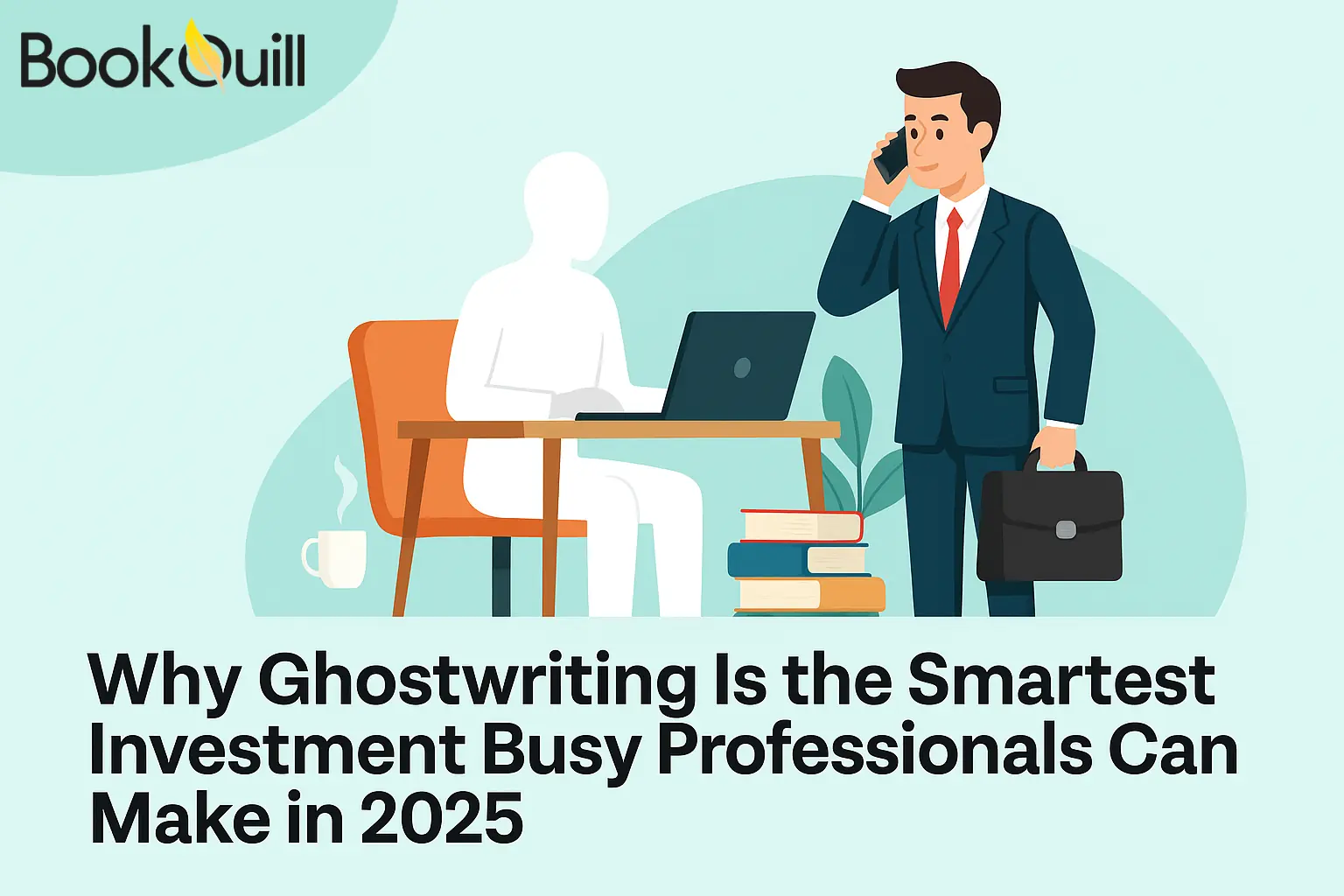Table of Contents
Explore Blogs
Trending on Ebook
Kindle Unlimited vs. Going Wide: How to Choose the Best Distribution Strategy for Your Book

When you’ve poured your heart, time, and sweat into finishing your book, one of the next big decisions stares you in the face: where and how to distribute it. Do you lock your eBook into Amazon’s Kindle Unlimited (KU) / KDP Select exclusivity, or do you go wide across all platforms?
This decision isn’t just a technical detail. It’s a core part of your book’s Distribution Strategy, shaping how readers discover you, how much control you have, and how stable your income can be. Choosing between Kindle Unlimited and going wide is about balancing visibility, flexibility, and long-term growth as an author.
5 Key Takeaways
- Choosing between Kindle Unlimited and going wide depends on your genre, audience, and goals. KU offers quick visibility and page-read royalties, while wide builds long-term stability and diverse income streams.
- KU’s exclusivity is attractive for new authors wanting traction fast, but it comes with risks like payout fluctuations and Amazon dependence. Going wide means slower growth but wider reach, more control, and greater resilience against policy changes.
- Many successful authors use a hybrid approach: starting with KU for momentum, then moving wide once they’ve built an audience. This allows them to balance discoverability on Amazon with the long-term benefits of multi-platform distribution.
- Your marketing resources matter. KU simplifies promotion through Amazon’s tools, while wide requires more effort across different retailers. If you can actively market on multiple channels, it’s more rewarding. If not, KU may fit better early on.
- Print and physical distribution are separate. Even if your eBook is exclusive to KU, you can still use Amazon or other platforms for print. Distribution and book fulfilment decisions should be planned alongside your eBook strategy for consistency.
What We Mean: KU / KDP Select vs. Going Wide
Before you can choose, you need clarity on the terms.
Kindle Unlimited / KDP Select (Exclusive Model)
If you enroll your eBook in Amazon’s KDP Select program, you agree to keep the eBook exclusive to Amazon. In return, your book becomes eligible for Kindle Unlimited and the Kindle Owners’ Lending Library, and you earn via page reads (via the KENPC / “normalized page count” system). You also get access to Amazon-only promo tools such as Kindle countdown deals and free book promotions.
Going Wide (Nonexclusive / Multi-Platform Model)
You distribute your eBook (and often print editions) across a variety of retailers: Apple Books, Kobo, Google Play, Barnes & Noble, other international stores, even your own website or via aggregators such as Draft2Digital, PublishDrive, Smashwords, etc. You retain flexibility and access to multiple revenue streams.
Note: The exclusivity clause only applies to the eBook version in KU; your print version (via Amazon print-on-demand or other POD services) can still be widely distributed elsewhere. Because of that, self-publishing distribution is a choice for many authors. They take either a hybrid approach or shift strategies over time.
Pros of Kindle Unlimited / KDP Select
1. Boosted Visibility on Amazon
KU borrows count as “sales” in Amazon’s algorithm, which can improve ranking, discoverability, and inclusion in Amazon’s internal marketing.
2. Access to Amazon’s Promotional Tools
You gain eligibility for Kindle Countdown Deals and Free Book Promotions (which help you run limited-time discounts or free days) — tools not available when you go wide.
3. Potentially Higher Earnings via Page Reads
For books in genres with binge readers (romance, fantasy, thrillers, etc.), page reads can generate consistent income beyond just one sale.
4. Simplicity / Focus
You only manage Amazon’s dashboard, royalties, and promotions. Fewer moving parts. Especially useful for new authors with limited time or resources.
5. Opportunity to Build Momentum Quickly
In some markets or genres, KU can help a book gain traction faster than it would initially.
Disadvantages / Risks of Kindle Unlimited / KDP Select
1. Locked Exclusivity
You cannot sell or distribute the eBook anywhere else during your KU enrollment, usually in 90-day intervals. That blocks you from other retailers or selling copies from your site.
2. Payout Volatility & Unpredictability
The per-page payout of the KU pool changes month to month. Some months can be decent, others low, depending on the total pages read across all KU books.
3. Dependence on Amazon’s Algorithm and Policy Changes
When your visibility is tied heavily to Amazon’s internal systems, any policy change or algorithm shift can suddenly impact your income or rankings.
4. Lost Opportunities in Other Markets
While your eBook is locked in KU, you miss out on the readers who prefer Apple, Kobo, Google, or other platforms.
5. Reader Habits / Transition Issues
If you later decide to go wide, readers accustomed to borrowing your book via KU might resist paying for it elsewhere.
Advantages of Going Wide
1. Multiple Revenue Streams
You aren’t putting all your eggs in one basket. If one platform’s sales dip, others may compensate.
2. Greater Control over Pricing & Promotions
You can run deals, discount campaigns, bundle offers, or free promotions through each retailer or your own website or via aggregators, unrestricted by KU limitations.
3. Reach a Broader, Global Audience
Some platforms are stronger in certain international markets, such as Kobo in Canada and Apple in many countries. Wide lets you tap into those.
4. Direct Sales & Reader Relationships
You can sell directly from your website via ePub or PDF and capture reader emails, which helps with long-term author business.
5. Stability / Less Vulnerability
Since your income streams are diversified, you reduce the risk of depending solely on Amazon’s policies or fluctuations.
Disadvantages / Challenges of Going Wide
1. More Complexity & Management Overhead
You’ll juggle multiple dashboards, royalty reports, formatting differences, promotions across platforms, and more work.
2. Slower Growth, at Least Initially
Without the built-in visibility boost from KU, building traction across platforms takes time and stronger marketing efforts.
3. Potentially Lower Sales on Amazon
Amazon may favor exclusive titles more in rankings, which can make your book less visible if it’s not enrolled in KU.
4. Promotion Limitations on Amazon
Without KU, you lose access to tools like Kindle Countdown Deals and Free Book Promotions.
Key Factors to Consider When Choosing
No one strategy fits everyone. Here are the variables you should weigh when deciding:
1. Your Genre & Reader Behavior
Some genres (romance, fantasy, thriller) tend to perform better on KU because readers binge. Others (specialist nonfiction, academic, niche topics) may sell better across platforms.
2. Your Existing Platform / Audience
If you have a strong mailing list or social presence, going wide helps you reach more platforms. If you’re new, KU may build momentum faster. Tools like Publisher Rocket can guide your choice by showing keyword trends, category competition, and reader demand, helping you choose the distribution path with the best royalty potential.
3. Number of Titles / Long-Term Plan
If you have just one book, KU’s boost might help you get traction. But if you plan to build a catalogue, going wide gives more balance.
4. How Much Time / Resources Can You Invest in Marketing
Wide requires more outreach, promotions, and cross-platform strategies. If your time is limited, a simpler approach is attractive.
5. Risk Tolerance
Are you okay with Amazon control and volatility? Or do you prefer stability and diversification?
6. Flexibility & Exit Strategy
Do you plan to stay in KU forever or transition? If transition is likely, you need a plan to migrate your audience.
7. Localization / International Reach
In countries where Amazon’s dominance is weaker, alternative platforms might outperform.
8. Print & Physical Distribution Strategy
Even if your eBook is KU-exclusive, you can still use Amazon print-on-demand services for physical copies and distribute them more widely. This ties into the best Amazon print-on-demand service, book fulfillment, etc.
Case Studies
To show how this plays out, here are three insightful real-world or research-backed examples.
Emma & Jake
Randall Wood’s ScribeCount site gives two fictional but instructive narratives comparing KU vs wide. One author, “Emma,” chose KU early, gained page reads, but struggled with volatility. The other, “Jake,” went wide from the start, built slower but more stable revenue. Over time, Jake’s diversified income became more resilient.
Analysis/Market Share & Author Earnings
PublishDrive published an article comparing Kindle Unlimited vs going wide, showing that Amazon still commands ~60% of the eBook market, but that ~40% of sales happen on other stores (Apple, Google, Kobo). Authors who go wide may capture that share. They also discuss how KU’s payout pool and fluctuations can affect income.
This is more of a market-data example than a single-author case, but it demonstrates important macro trends influencing your decision.
How to Choose and What to Do
Let’s walk through a decision path and then the tips.
Decision Path
1. What’s Your Priority Right Now?
- If your immediate goal is visibility, traction, and momentum, KU may help more
- If your priority is diversification, control, and long-term stability, going wide is compelling
2. Genre check
- If your genre is KU-friendly (romance, fantasy, serial fiction) and you expect high page reads, that leans you toward KU
- If it’s non-fiction, academic, niche, or you believe your readers will buy directly, going wide might suit you better
3. Resources available
- If you have limited time/resources for promotions, the simpler path with KU may feel safer initially
- If you can invest effort in cross-platform marketing, it is viable
4. Plan for the future
- If you’re okay staying in KU indefinitely for a specific title, fine
- If you foresee shifting, plan your transition: e.g., enroll for one or more 90-day windows, then withdraw and build a wide presence gradually
5. Test & review
- You don’t have to commit forever. Some authors try KU for an initial period, then compare results with wide options
- Monitor your royalties, reader behavior, and whether reader resistance arises when transitioning
9. Tips & Best Practices
Regardless of your choice, here are practical things to watch for:
- Use aggregators or services to help you manage self-published book distribution across multiple retailers (e.g. Draft2Digital, PublishDrive).
- Keep track of all royalty reports, sales, and page reads; compare month to month.
- Promote via email list, social media, paid ads (Amazon Ads, BookBub, etc.), review campaigns — promotion is essential no matter the path.
- If you go to KU, be careful with piracy and maintaining exclusivity (don’t distribute files elsewhere, even as giveaways).
- If going wide, format cleanly for each retailer, manage metadata, and utilize each platform’s promotional tools.
- On the print side, use Amazon print-on-demand service, i.e., Amazon’s own KDP print. For print fulfillment, you can distribute print via Amazon while your eBook is wide.
- If you choose to use Amazon’s infrastructure for publishing support, consider hiring contracting editors, formatters, and cover designers who know about Amazon but still maintain control of your rights.
- Encourage authors to publish reviews (genuine reviews from readers) across platforms. Reviews help you regardless of your path.
- Always read the fine print in distribution contracts: some aggregators may take commission or limit certain rights.
| Criteria | Favors Kindle Unlimited / KDP Select | Favors Going Wide |
|---|---|---|
| Need quick visibility and momentum. | ✅ | |
| Writing in a binge-friendly / KU genre | ✅ | |
| Limited time/resources for marketing | ✅ | |
| Want pricing control, promotions, bundles. | ✅ | |
| Want diversified income streams/safety. | ✅ | |
| Already have audience/email list. | ✅ | |
| Willing to lock eBook & risk Amazon volatility | ✅ | |
| Plan to transition later or multiple titles | ✅ |
Final Thoughts
Choosing between Kindle Unlimited and going wide is one of the most important decisions you’ll make as an author. Each path has benefits and drawbacks, and the right choice depends on your goals, genre, and how much time you want to invest in marketing and outreach. Kindle Unlimited offers immediate visibility, while going wide provides long-term stability and multiple income streams.
Many successful authors experiment with both before settling into a strategy that fits their career, or choose the best Amazon ebook publishing service to handle all this. The key is to stay flexible, monitor your results, and remember that your publishing journey doesn’t have to be one-size-fits-all. With the right guidance and tools, you can confidently move forward.
FAQs
Q1. How does KU exclusivity affect audiobook distribution?
Kindle Unlimited rules apply only to the eBook version. You can still distribute your audiobook widely through services like ACX or Findaway Voices, making audio a strong complement if you want both KU exposure and wide reach simultaneously.
Q2. Do I need professional help to manage KU or wide publishing?
Not necessarily, but many authors choose to hire Amazon book publishing services for editing, formatting, or distribution setup. Outsourcing tasks can free up your time, reduce errors, and help your book look more professional at launch.
Q3. Does KU impact print royalties or fulfilment options?
No. KU restrictions are for eBooks only. Your paperback or hardcover can be distributed anywhere. Using the Best Amazon print-on-demand service or IngramSpark is common for handling print fulfillment alongside KU eBook enrollment.
Q4. Can I use Kindle Unlimited for one book while going wide with another?
Yes. Amazon’s exclusivity applies on a per-title basis. Many authors test KU with one book while distributing others widely. This creates a mixed strategy for distribution that lets them compare earnings and growth across platforms.
Q5. Can I hire help for eBook setup if I go wide?
Yes. You can hire Amazon ebook publishing services or other freelance professionals to ensure your files are correctly formatted for Apple, Kobo, Google, and more. Proper formatting and metadata are critical for discoverability across multiple platforms.
Note: Some of the links in this post are affiliate links. This means if you click on them and make a purchase, we may earn a small commission at no extra cost to you. We only recommend products and services we genuinely trust and believe will be useful to our readers. Your support helps us continue creating honest, helpful guides like this one. Thank you!
About Author
Hi, my name is Zachary Stone I’m a book marketing nut — or, as I like to call myself, a “Shelf Marketer.” No, I don’t sell wooden shelves; I market the books that are left forgotten on them. If you want your book to be the next bestseller, I am your go-to person. I am here to remind you that it’s not just about writing a great story — it’s about building a buzz among people with great campaigns.




